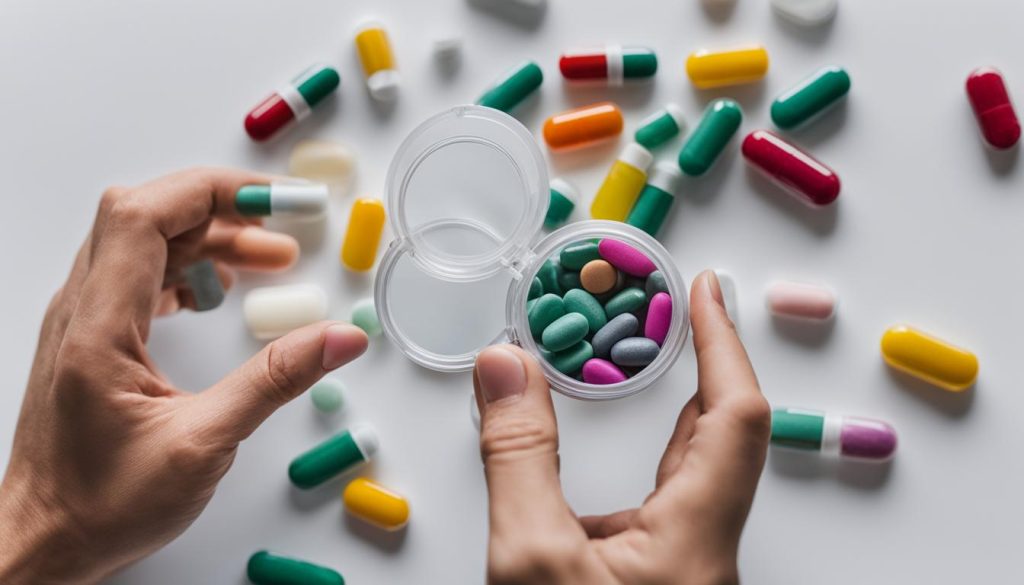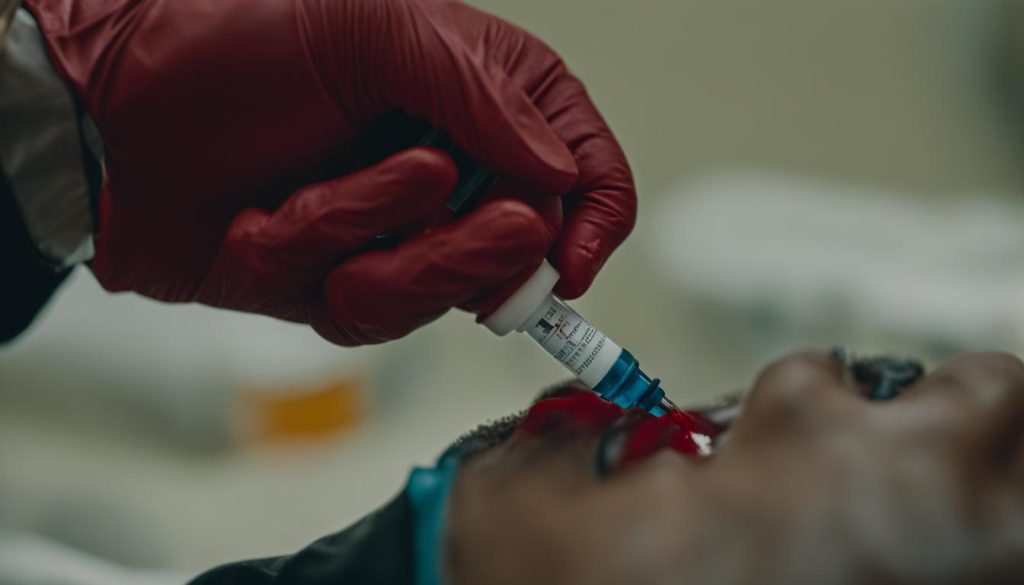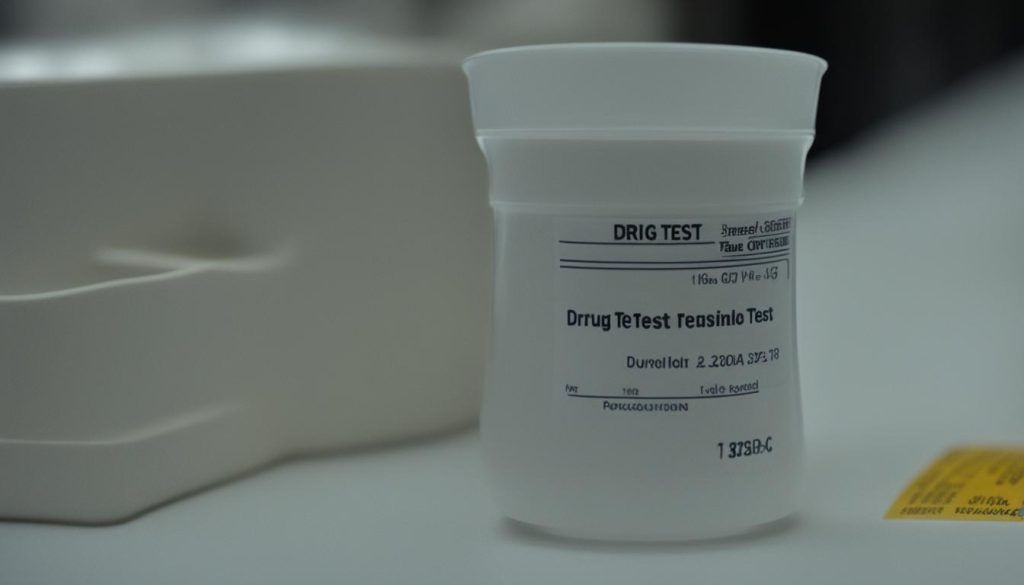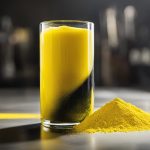
Welcome to our comprehensive guide on emergency drug test preparation. If you find yourself facing an unexpected drug test and need to pass within a 24-hour window, we have you covered. In this article, we will provide you with essential information and strategies to ensure your success. From detox kits to effective methods, we’ll equip you with the knowledge you need to confidently navigate this challenging situation.
Key Takeaways:
- Detox kits are reliable and fast solutions for passing a drug test within 24 hours.
- Understanding the different types of drug tests and their detection windows is crucial for effective preparation.
- The saliva drug test is easily administered and has a short detection window, making it a challenging test to pass.
- Blood drug tests are rarely used but have a short detection time, making detoxing methods similar to urine tests.
- Urine drug tests are the most popular and easy to administer, but require careful consideration of the test type and validity checks.
Types of Drug Tests and How They Work
In order to understand how to prepare for a drug test, it is important to first have a clear understanding of the different types of drug tests that are commonly used. These tests vary in their methods of detection and the substances they can identify. The four main types of drug tests are saliva, blood, urine, and hair tests.
Saliva Drug Test: This type of drug test is non-invasive and can detect recent drug use. It is typically used for on-the-spot testing and is popular in workplaces and law enforcement. A swab is used to collect a sample of saliva, which is then tested for the presence of drugs. Saliva tests are known for their short detection window, typically detecting drug use within the past 24 to 48 hours.
Blood Drug Test: Blood tests are less common than other types of drug tests due to their invasive nature. They are typically used in situations where immediate and accurate results are required, such as in suspected DUI cases. Blood tests can detect drug use within a few hours of ingestion and are considered to have a short detection window.
Urine Drug Test: Urine tests are the most commonly used type of drug test due to their ease of administration and ability to detect a wide range of drugs. This type of test has a longer detection window compared to saliva or blood tests, typically ranging from a few days to several weeks depending on the drug and frequency of use.
Hair Drug Test: Hair tests are less common but are considered to be highly accurate in detecting drug use over a longer period of time. This type of test analyzes a hair sample to detect the presence of drug metabolites. Hair tests have a detection window of approximately 90 days, making them a reliable method for identifying past drug use.
| Drug Test Type | Detection Window | Main Advantages |
|---|---|---|
| Saliva Drug Test | 24-48 hours | Non-invasive, on-the-spot testing |
| Blood Drug Test | Few hours | Immediate and accurate results |
| Urine Drug Test | Days to weeks | Most commonly used, wide range of detectable drugs |
| Hair Drug Test | Approximately 90 days | Highly accurate long-term detection |
Saliva Drug Test: The Dangers and Challenges
When it comes to drug testing, the saliva drug test has gained popularity for its ease of administration and quick results. With on-the-spot testing becoming more common, employers and law enforcement agencies are turning to saliva drug tests as a cost-effective solution for detecting recent drug use. However, there are inherent dangers and challenges associated with this type of testing.
One of the primary dangers of saliva drug testing is the short detection window. Saliva tests typically can only detect drug use within the past 24 to 48 hours, making it difficult to identify long-term or chronic drug users. While this may be advantageous for immediate screening purposes, it poses limitations in assessing an individual’s overall drug history.
Another challenge with saliva drug testing is the potential for false positives due to external contamination. Unlike urine or blood tests, saliva tests can be influenced by substances present in the mouth, such as food, medications, or even oral hygiene products. This raises concerns about the reliability and accuracy of the test results, as false positives can have significant consequences for individuals being tested.
Furthermore, the increasing use of saliva drug tests for on-the-spot testing raises questions about privacy and personal rights. Unlike other types of tests that can be conducted in a more controlled environment, saliva tests can be administered anywhere, making it difficult to maintain confidentiality. There is a lack of standardized procedures and regulations for on-the-spot saliva testing, potentially compromising the integrity of the testing process.
It is essential for individuals and organizations relying on saliva drug tests to be aware of these dangers and challenges. While saliva testing may offer convenience and cost-effectiveness, it is important to consider its limitations and potential drawbacks. Understanding the risks associated with saliva drug testing can help ensure fair and accurate results while protecting the rights and privacy of those being tested.
Blood Drug Test: Rarity and Short Detection Time
In the realm of drug testing, the blood drug test is a rare occurrence. Unlike urine or saliva tests, which are more commonly used due to their ease of administration, the blood drug test is reserved for specific circumstances where a more accurate and immediate result is required.
One of the key advantages of the blood drug test is its short detection time. While urine tests can detect drug metabolites for several days or even weeks after use, the blood test has a narrower window of detection. Typically, drugs can only be detected in the blood for a few hours to a few days after use, making it a preferred method for detecting recent drug use.
“The blood drug test provides a snapshot of a person’s immediate drug use, making it a valuable tool for law enforcement or in situations where immediate results are needed.”
Although the blood drug test is rarely used, it is important to note that the same principles apply in terms of detoxing and passing the test. Just like with a urine test, detox kits and methods can help eliminate drug metabolites from the blood, ensuring a negative result. It is essential to follow the recommended detoxification protocols and allow enough time for the body to eliminate any traces of drugs.
While the blood drug test may not be as common as other methods, it is crucial to be prepared and knowledgeable about all types of drug tests. Understanding the unique characteristics and detection times of each test can help individuals develop effective strategies to pass them successfully.

Table: Comparison of Drug Test Types
| Drug Test Type | Detection Time | Method of Administration |
|---|---|---|
| Saliva | Up to 72 hours | Oral swab |
| Blood | A few hours to a few days | Needle draw |
| Urine | Up to several weeks | Collecting a urine sample |
| Hair | Up to 90 days | Collecting a hair sample |
Urine Drug Test: Most Popular and Easy to Administer
When it comes to drug testing, the urine drug test is by far the most popular method used today. Its widespread use can be attributed to its ease of administration and the reliable results it provides. Whether you’re applying for a new job or facing a routine workplace drug screening, understanding the ins and outs of the urine drug test is essential to ensure a successful outcome.
There are three main types of urine drug tests: unsupervised, supervised, and observed tests. Unsupervised tests are the most common and involve providing a urine sample in private. Supervised tests, on the other hand, require someone to be present to observe the sample collection process. Observed tests take privacy to an extreme level, where the sample collector is present in the bathroom with the individual throughout the entire process.
Validating the authenticity of the urine sample is a critical step in the urine drug testing process. This is achieved through validity checks, which examine the sample for indicators of tampering or dilution. The most common method is immunoassay analysis, which detects the presence of specific drug metabolites in the urine. It’s important to note that the sensitivity and accuracy of these tests can vary, so ensuring you follow the proper detoxification methods is crucial to passing the urine drug test successfully.

Table: Comparison of Urine Drug Test Types
| Test Type | Description | Level of Scrutiny |
|---|---|---|
| Unsupervised | Individual provides a urine sample in private. | Low |
| Supervised | Someone is present to observe the sample collection process. | Medium |
| Observed | Sample collector is present in the bathroom throughout the process. | High |
Understanding the different types of urine drug tests and the processes involved can help you navigate through the testing procedure with confidence. Whether it’s an unsupervised test or a more closely monitored one, being aware of the level of scrutiny you may face allows you to prepare adequately. Additionally, ensuring that you follow proper detoxification methods and meet validity checks is paramount to passing the urine drug test successfully.
Hair Drug Test: Rarity and Indelible Record
The hair drug test is a rare but dangerous method of drug testing that leaves an indelible record of drug metabolites. Unlike other types of drug tests, the hair drug test can detect drug use over a longer period of time, typically up to 90 days. This makes it a particularly challenging test to pass for individuals who have used drugs in the past three months.
Table: Hair Drug Test Detection Times
| Drug | Detection Time |
|---|---|
| Marijuana | Up to 90 days |
| Cocaine | Up to 90 days |
| Opiates | Up to 90 days |
| Amphetamines | Up to 90 days |
As the test involves analyzing the hair shaft, which grows at an average rate of half an inch per month, the hair drug test can provide a comprehensive history of an individual’s drug use within the past three months. This makes it a preferred method for employers and law enforcement agencies who want a long-term view of an individual’s drug habits.
However, while the hair drug test is effective in detecting past drug use, it has its limitations. For example, the test cannot detect drug use within the first 5-7 days of ingestion, as it takes time for the drug metabolites to be incorporated into the hair shaft. Additionally, the test may produce false positives or false negatives in certain situations, such as when an individual has been exposed to drugs passively rather than through direct use.
Despite its limitations, the hair drug test remains a powerful tool for detecting past drug use. It is essential for individuals facing a hair drug test to understand its detection window and take appropriate measures to minimize the risk of detection. In the following sections, we will explore strategies and methods to help individuals pass a hair drug test successfully, ensuring their privacy and peace of mind.
Different Types of Urine Drug Tests
When it comes to urine drug tests, there are several different types that can be administered. Understanding the nuances of each type is essential for effectively preparing and passing the test. In this section, we will explore the three main types of urine drug tests: unsupervised, supervised, and observed.
Unsupervised Urine Drug Test
An unsupervised urine drug test is the most common type of drug test in many workplaces and organizations. It involves the individual being given privacy to provide a urine sample, which is then sent to a lab for analysis. This type of test is typically less intrusive and more convenient, as it allows individuals to provide the sample without direct observation.
Supervised Urine Drug Test
A supervised urine drug test, on the other hand, involves direct observation by a designated person while the individual provides the urine sample. This type of test is often used in situations where there is a higher risk of tampering or cheating. The observer ensures the integrity of the sample collection process by monitoring the individual closely.
Observed Urine Drug Test
An observed urine drug test takes supervision a step further by requiring the individual to be in full view of the observer during the entire sample collection process, including the act of urination. This type of test is typically reserved for high-security environments or situations where there is a history of attempted cheating. It provides the highest level of certainty and minimizes the chances of sample adulteration or substitution.
Understanding the differences between these types of urine drug tests is crucial for preparing effectively. By knowing what to expect and employing the appropriate strategies, individuals can increase their chances of successfully passing the test and achieving their desired outcome.

| Type of Urine Drug Test | Level of Observation | Purpose |
|---|---|---|
| Unsupervised | Minimal observation, individual privacy | Common in many workplaces and organizations |
| Supervised | Direct observation by a designated person | Used in situations with a higher risk of tampering or cheating |
| Observed | Full view observation during entire sample collection | Reserved for high-security environments or situations with a history of attempted cheating |
How Long Do Drug Metabolites Stay in the Body?
When it comes to drug testing, one of the crucial factors to consider is the length of time drug metabolites can be detected in the body. Understanding the detection windows for different drugs is essential for determining how long one should abstain from drug use before a test. Drug detection times can vary depending on several factors, including the type of drug, frequency of use, dosage, and individual metabolism.
To give you a general idea, let’s take a look at the detection times for some commonly abused substances:
- Cannabis metabolites (THC): The primary psychoactive compound in marijuana can be detected in urine for up to 30 days in chronic users, while occasional users may test positive for up to 10 days. Hair tests have a longer detection window, typically up to 90 days.
- Cocaine metabolites: The byproducts of cocaine use can be detected in urine for up to 4 days. However, in heavy or chronic users, it may be detectable for a longer period.
- Amphetamines: These stimulant drugs, including methamphetamine and MDMA (ecstasy), can be detected in urine for up to 3 days. Hair tests can detect amphetamines for up to 90 days.
- Opioids: The detection window for opioids can vary depending on the specific drug. For example, heroin metabolites can be detected in urine for up to 3 days, while prescription opioids like oxycodone can be detected for up to 2-4 days.
It’s essential to note that these detection times are approximate and can vary depending on individual factors. Additionally, different drug testing methods, such as saliva or blood tests, may have different detection windows. Therefore, it’s always advisable to consult with a healthcare professional or drug testing expert for accurate information and guidance.
| Drug | Urine Detection Time | Hair Detection Time |
|---|---|---|
| Cannabis (THC) | Up to 30 days | Up to 90 days |
| Cocaine | Up to 4 days | N/A |
| Amphetamines | Up to 3 days | Up to 90 days |
| Opioids | Varies (e.g., heroin up to 3 days) | N/A |
Remember, it’s crucial to allow sufficient time for drug metabolites to clear from your system naturally if you want to pass a drug test. If you’re in a time-sensitive situation, there are detox products and methods available that claim to help speed up the elimination process. However, it’s important to research and choose reputable products that have proven effectiveness and safety.
Pass a Urine Drug Test: Synthetic Urine
In order to pass a urine drug test, many individuals turn to synthetic urine as a reliable solution. Synthetic urine is a laboratory-created product that closely mimics the composition and characteristics of real urine. It is specifically designed to meet the validity checks used in drug testing, ensuring that it appears and tests as genuine urine.
Synthetic urine is an effective option for those who want to pass a drug test without the risk of detection. It contains all the necessary components found in real urine, including urea, creatinine, and uric acid. Additionally, high-quality synthetic urine brands, such as Sub Solution and Quick Luck, are formulated to maintain the correct pH level and specific gravity, further enhancing their authenticity.
When using synthetic urine, it is essential to follow the instructions provided and meet the validity checks typically used in drug testing. These checks may include temperature verification, visual inspection, and laboratory analysis. By ensuring that the synthetic urine meets all the necessary criteria, individuals can increase their chances of passing a urine drug test successfully.
It is important to note that using synthetic urine to deceive a drug test is illegal and unethical. The purpose of synthetic urine is for calibration and quality control purposes in laboratories, not for evading drug testing. Engaging in such practices can have serious consequences, including legal action and damage to one’s reputation.
How to Pass a Urine Drug Test Naturally
When it comes to passing a urine drug test naturally, there are several methods you can employ to increase your chances of success. One of the most important factors is staying hydrated. Drinking plenty of water helps flush out toxins from your body and dilutes the concentration of drug metabolites in your urine. However, it’s crucial to strike a balance and avoid excessive water consumption, as it may lead to overhydration.
In addition to water dilution, regular exercise can also be beneficial in expediting the elimination of drug metabolites. Physical activity increases your metabolism and promotes the breakdown of fat cells, which can store traces of drugs. Engaging in cardiovascular exercises, such as running or cycling, for at least 30 minutes a day can help speed up this process.
While natural methods like water dilution and exercise can be effective, it’s important to note that the best results are achieved with sufficient time. Drug metabolites can take several days or weeks to leave your system completely, depending on various factors such as the type of drug used, dosage levels, and individual metabolism.
| Benefits of Natural Methods | Precautions |
|---|---|
|
|
While natural methods provide a potential solution for passing a urine drug test, it’s important to note that individual results may vary. Factors such as drug usage patterns, metabolism, and overall health can impact the effectiveness of these methods. Therefore, it’s always advisable to consult with a healthcare professional or seek guidance from a trusted source.
Conclusion
In conclusion, being prepared for a drug test is of utmost importance, especially when you only have 24 hours to prepare. When it comes to passing a drug test, detox kits have proven to be reliable solutions. Whether you are facing a saliva, blood, urine, or hair drug test, these kits can help you achieve fast and accurate results.
Detox kits are particularly effective for urine drug tests, which are the most popular and easy to administer. They provide a safe and natural way to detox your body and eliminate drug metabolites. Additionally, synthetic urine has emerged as a viable option for passing a urine drug test.
It’s crucial to note that the effectiveness of detox kits and other methods relies on several factors, such as the type and frequency of drug use, individual metabolism, and the detection time of drug metabolites in the body. Therefore, it’s essential to consider these factors and allow sufficient time for detoxing before your drug test.
In summary, when it comes to passing a drug test, having reliable solutions at hand is key. Detox kits offer a practical and efficient way to cleanse your system and increase your chances of passing a drug test. By being prepared and utilizing the right methods, you can confidently face any drug test that comes your way.
FAQ
What are detox kits, and how do they help in passing a drug test?
Detox kits are specially formulated products that aid in the elimination of toxins from the body. They contain natural ingredients that support the body’s detoxification process, helping to flush out drug metabolites and increase the chances of passing a drug test.
What are the different types of drug tests?
There are several types of drug tests commonly used, including saliva, blood, urine, and hair tests. Each test has its own detection window and challenges when it comes to passing.
How long do drugs stay detectable in saliva?
Drugs are typically detectable in saliva for a shorter period compared to other types of tests. The detection window for saliva drug tests is usually up to 72 hours, making it important to be prepared for on-the-spot testing.
Are blood drug tests commonly used?
Blood drug tests are relatively rare and primarily used in specific situations, such as accidents or suspected impaired driving. They have a short detection window, similar to urine tests.
Why are urine drug tests popular?
Urine drug tests are popular due to their ease of administration and wide availability. They can detect drug use over a longer period compared to saliva or blood tests, making them a common choice for workplace and pre-employment testing.
How far back does a hair drug test detect drug use?
Hair drug tests can detect drug metabolites for up to 90 days, depending on the length of the hair sample. This type of test creates an indelible record of drug use and is rarely used due to its cost and complexity.
What are the different types of urine drug tests?
There are three main types of urine drug tests: unsupervised, supervised, and observed. Each type varies in the level of scrutiny and privacy during the testing process.
How long do drug metabolites stay in the body?
The length of time drug metabolites stay detectable in the body depends on various factors, including the type of drug used, dosage levels, personal health, and metabolism. Generally, drugs can be detected for a few days up to several weeks after use.
Can synthetic urine help pass a urine drug test?
Yes, synthetic urine can be an effective solution for passing a urine drug test. High-quality synthetic urine brands, such as Sub Solution and Quick Luck, are designed to closely mimic real urine and pass validity checks when used correctly.
Are there natural methods to pass a urine drug test?
Yes, there are natural methods that can help pass a urine drug test. Drinking plenty of water, exercising to stimulate the metabolism, and using detox kits can aid in flushing out toxins from the body. However, it is important to note that these methods require time and may not provide immediate results.
How reliable are detox kits in passing a drug test?
Detox kits have been proven to be reliable solutions for passing a drug test when used as directed. They work by supporting the body’s natural detoxification process and increasing the elimination of drug metabolites. However, it is essential to choose high-quality detox kits from reputable brands for optimal results.
















